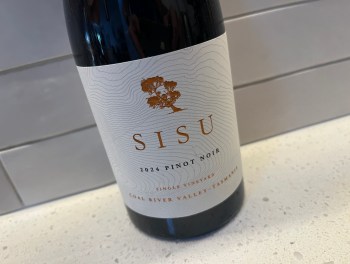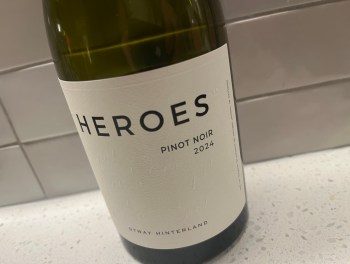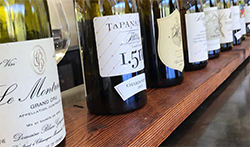Super Premium Week Day 7: Brunello Montalcino 2007 – an exploration
What else do you conclude Super Premium Week with than a comparative tasting of 2007 Brunello?
Actually, there are plenty of different things that I could be talking about than Brunello, particularly given I’m not the biggest Sangiovese fan.
But Brunello Montacino is different. Nowhere manages to express the joy of Sangiovese than the Montalcino zone, even despite the region’s troubled recent history, with the best Brunellos from this area amongst Italy’s most revered wines of any variety. Brunello IS Sangiovese, even if Chanti offers often better value.
Everything came together well in 2007 too, the wines more rich, open and flattering than many other vintages, the colours deep, the acidity low, the palate full. You can see such expressiveness in this lineup, the best examples utterly delicious reds of both flavour and savouriness, if perhaps a bit more forward than the 2006 vintage wines (which I genuinely loved).
What made this tasting interesting though was that it offered a chance to look at a few subzones within Montalcino, the wines bracketed by subzone to make for an all-to-rare experience here in Australia where Brunello remains a rare and expensive treat.
Perhaps the only real challenge of this tasting was that we tasted the wines at wine show pace, accompanied by interesting commentary, which made writing notes and comprehending the wines somewhat of a difficult exercise.
Suffice to say that I’d like another, longer look at many of these wines and you can definitely add a point or so on to my scores in most cases.
For each subzone and wine I have included some notes as provided by Sommeliers Australia (which I believe are somewhat based on the book ‘Brunello di Montalcino – Understanding and Appreciating One of Italy’s Greatest Wines‘ from Kerin O’Keefe). All wines are 2007 Brunellos, no Riservas, with all served blind and notes are as written on the day. I scored very harshly.
The 2007 Brunello di Montalcino wines
Bracket 1 Montalcino South
Mainly calcerous and sandy limestone soils with flaky, marly galestro also present. High mineral content in the soils. Generally a higher altitude area, producing wines with more perfume and acidity.
Conti Costanti
Est. 1983 with roots back to 1863. 18 months in new and used 350-500L Allier barrels, then 18 months in 30hL Slavonian botti.
1. Shows quite a deal of wood and slightly fusty oak too. Quite a luscious, almost fleshy mid palate and finishes with wood tannins. A little too much wood over fruit but classy. Very classy and satisfying traditional style. 17.7/20 92/100+
Il Palazzone
Established 1987. Long maceration and 4 years in large Slavonian oak.
2. Nutty and quite classic, the length here is very smart if slightly oxidative. So old school in its more oxidative, long bottle aged style but carries a certain firmness and gritty tannins too. Length is excellent. Slightly ferocious tannins but long term joy to the length. 18/20 93/100
Villa I Cipressi
Est. 2000. 60% in French barriques, 40 % in large oak for 24 months the 36 months in bottle.
3. Noticeably brighter in colour, with a positively fleshy red fruit character. Nowhere near as deep or long than the other wines here but as an early drinker this is plush and fruit jammy. Jam is apt actually, for its just a bit simple and fruity in context. Still smart. 16.8/20 89/100
La Fornace
Est. 1964. 2 years in Slavonian botti.
4. Quite a fleshy middle even if the oak looks a little les than fresh. The fruit underneath is quality though. 17.5/20 91/100
Montalcino North
Even cooler again, vineyards are on steep slopes 300-400m above sea level. Mostly calcerous limestone soils. More delicate styles. Large oak dominates.
Altesino
Est. 1975. 2 years in Slavonian oak.
1. Fragrant nutty berry nose. Looks and smells quite forward. Slightly confected fruit and raging tannins. Not the easiest wine to like but has form. 16.5/20 88/100
Valdicava
Est. 1968. Large Slavonian oak.
2. Ferrous, earthen and floral, this has tremendous length and charisma. Very old school but with supreme length. Dense tannins. 18/20 93/100
Il Paradiso di Manfredi
Est. 1950. Fermented in fiberglass cement tanks then in large oak for 3 years plus.
3. Oxidative and wild, the palate quite forward and meaty, bretty edge to the palate robs it of real joy. 15/20 85/100
Fuligni
Est. 1923. 3 years in mostly Slavonian oak and one year in bottle.
4. Rich and weighty but with a softness to it that is quite appealing. Mid weight and driven by the sour tannins. Lovely form about this one if just a bit oak driven. Big yes. 18.5/20 94/100
Torrenieri
The most controversial subzone, the region’s wines produced from marine clay deposit soils not historically suited to viticulture. The Brunello Consorzio did not removed this area from the delimitation process as they presumed no one would plant in the thick clay and mud. Best Brunellos in the area come from vineyards 300m+ which is above the humid lower elevations.
Casanova di Neri
Est. 1971. Slavonian oak barrels for 36 months.
 |
| Not a bad place to taste Brunello |
1. Quite a deal darker and redder than the wines around it. Volatile and sort of hard sort of wine with ferocious tannins and high alcohol. Cumbersome wine to drink, everything bound in the mid palate with plenty of oak. Hard edges. Seriously extracted. 16/20 87/100
Castelnuovo dell’Abate
Exciting subzone defined by varied growing conditions. Benefits from warmer temperatures but doesn’t suffer the scorching heat of Sant’Angelo to the west because the Orcia River generates cooling night winds. Complex mix of soils.
Mastrojanni
Est. 1976. Fermented in fiberglass cement tanks and spends 3 years in various large French oak for 3 years.
1. Fatter and modern with real oak impact. Very sexy licoricey and wild red fruit. Lovely meaty hints. Certainly outré wildness to it. Perhaps too modern. Rather delicious though. 18/20 93/100+
Fanti
Est Mid 1980s. 12 months in barriques and 12 months in large French oak.
2. Black pepper and sausage meat nose. Looks quite wild and licoricey. Seriously meaty and obviously Sangiovese, this looks very modern too. Better tannin balance too. Very tasty. 18.2/20 93/100
Poggio di Sotto
Est. 1989. Long maceration with four years in 30hL Slavonian cask.
3. Nutty with lots of oxidative stink too it. Long barrel ageing here but looks surprisingly soft. Quite silken and balanced if also obviously forward. Going to be long lived but hardly an overwhelming wine, particularly given that oak softness. So very much oak. 17.5/20 91/100++
Camigliano & Tavernelle
Select areas near Tavernelle, particularly Santa Restituta, have long been renowned for their Sangiovese potential. Vineyard altitudes here average 300-350m. Hot days, cool nights. Rocky soils with Camigliano also sharing some galestro rich soils.
Querce Bettina
Est. 1992. 28-30 months in 20hL Slovenian oak and 12 months in bottle.
1. Nutty and sweet and sour. Looks a bit out of freshness really. 15.5/20 85/100
Villa Le Prata
Est. 1980. 24 months in 5hL French tonneaux then 24 months in 30hL Slavonian wood.
2. Rich and chocolatey and mulchy. A bit new world but savoury and dry. Perhaps a little warm and open but attractive. I really like the evolution and proper classic style. Love the sausage meat. too. Best of both worlds. 18.5/20 94/100
Poggio Antico
Est. 1984. 3 years in Slovenian oak (37-55hL) and one in bottle.
3. Lovely plush style, much softer and more fruit. I like the extra freshness here. Very pretty and rich modern wine. The freshness on this looks ideal. 18/20 93/100
Pieve di Santa Restituta
Est. 1994. 500L casks for 24 months, one year in concrete tanks.
4. Nearly all oak. Very sexy but way too much oak. Oak ferment too. Very plush but too new world really. 17/20 90/100
Castelgiocondo
Est. 1989. Long maceration, total four years aging with at least 2 in Slavonian oak and French barrels plus 4 months in bottle.
5. Quite pretty but too ripe. Almost scorched ripe even. Confectionery and jubey fruit. Not a massive fan and thought this lacked some freshness. 15.8/20 86/100
Sant’Angelo
Dominated by large scale wineries like Banfi and Argiano. Area makes 30-40% Brunello output. Climatic conditions more Mediterranean. Hottest and driest Brunello subzone. Calcerous soil with marine deposits of clay and silt.
San Felice Campogiovanni
Est. Early 1980s. 3 years in large Slavonian botti and 12 months in bottle.
1. Quite dark really. Has an intriguingly meaty cranberry fragrance. Sweet oak but excellent tannins. Lovely length and a real grainy animale palate. Supremely powerful. 18.7/20 95/100
Argiano
Est. 1992. First year in French barriques and 18 months in large Slavonian oak.
2. Plush and open nose, seamless but also less delineated. A little too sweet and oaky I think, that meatiness is all new oak driven. Good, not truly great. 17
Col D’Orcia
Est. 1933. Four years aging, 3 of which are in a combination of large (25, 50, 75hL) Slavonian and Allier oak casks and 12 months in bottle.
3. Blunt, simple and earthen. Looks mono dimensional and lacks life. 15/20 84/100
Help keep this site paywall free – donate here





Leave A Reply